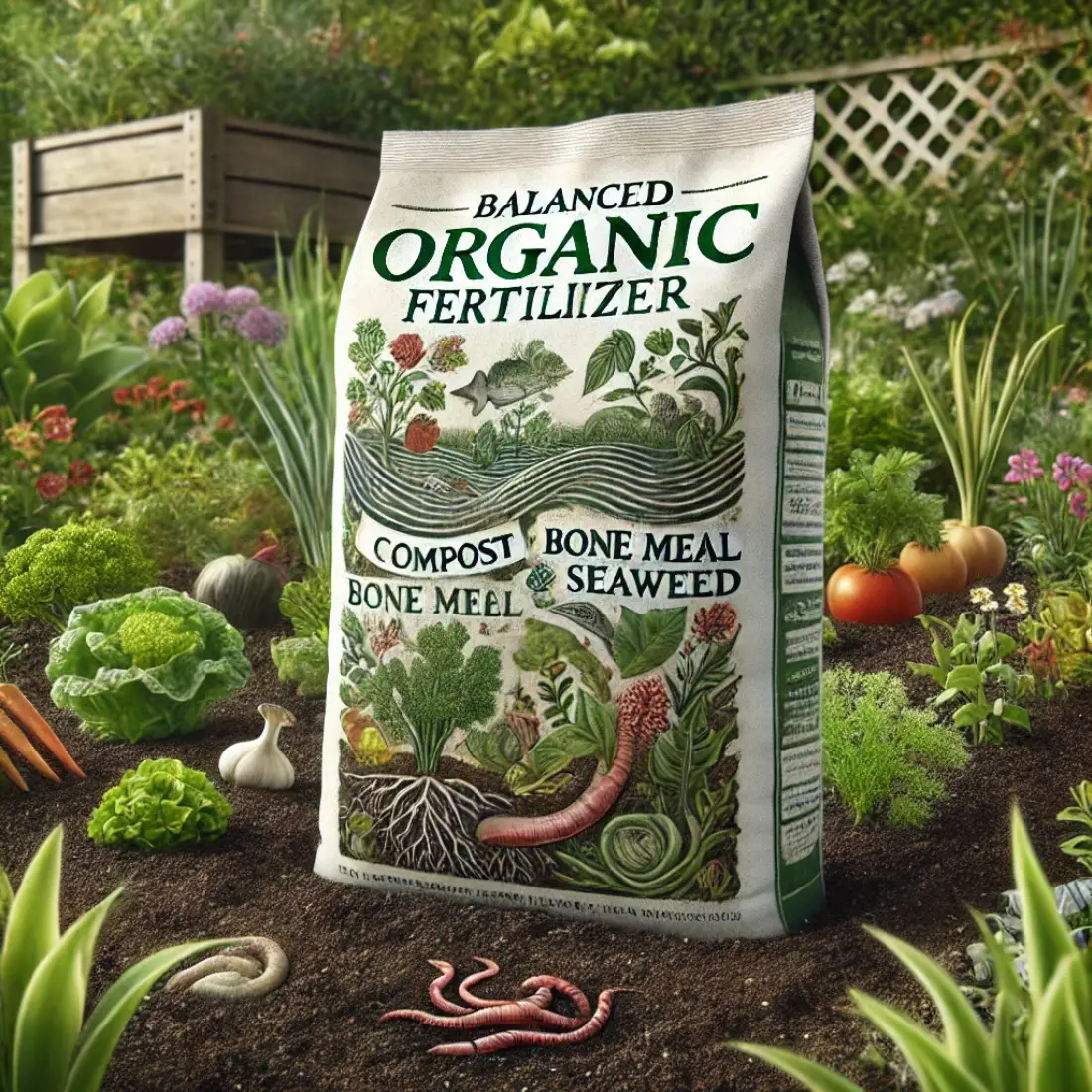Proper fertilization is crucial for the health and productivity of plants, whether in a home garden or on a large farm. However, over-fertilization can lead to a range of problems, from damaging plant roots to polluting nearby water sources. Knowing how to fix and prevent over-fertilization is essential for maintaining a thriving garden and protecting the environment.
- Over-fertilization can damage plants and soil health.
- Recognizing signs of over-fertilization early is crucial.
- Prevention methods include proper planning and regular soil testing.
- Steps to fix over-fertilization involve soil amendment and careful monitoring.
Understanding Over-Fertilization
Over-fertilization occurs when plants receive more nutrients than they can effectively use. This excess of nutrients, particularly nitrogen, phosphorus, and potassium, can lead to detrimental effects on plant health and soil quality.
Common causes include applying too much fertilizer, using the wrong type, or not following recommended application guidelines. Understanding what over-fertilization is and how it happens is the first step in preventing and correcting this issue.
Symptoms of Over-Fertilization
Recognizing the symptoms of over-fertilization early can help mitigate its effects. Here are some common signs to look out for:
- Yellowing Leaves: Excess nutrients can cause chlorosis, leading to yellowing of leaves.
- Leaf Burn: High salt concentrations from fertilizers can cause leaf edges to burn and turn brown.
- Wilting: Despite regular watering, over-fertilized plants may wilt because the excess salts disrupt water uptake.
- Stunted Growth: Over-fertilization can inhibit root growth, leading to stunted or uneven plant growth.
- Soil Crusting: A white crust on the soil surface can indicate salt buildup from excessive fertilizer use.

Differentiating these symptoms from other plant stress factors, such as pest infestations or diseases, is crucial for accurate diagnosis.
Effects of Over-Fertilization on Plants
The impact of over-fertilization on plants and soil can be severe and long-lasting:
- Short-Term Effects: Immediate symptoms like leaf burn and wilting can stress plants, reducing their ability to photosynthesize and grow.
- Long-Term Effects: Persistent over-fertilization can lead to root damage, making it difficult for plants to absorb water and nutrients. This can stunt growth and reduce crop yields.
- Soil Health: Excessive nutrients can alter soil pH, harm beneficial microorganisms, and reduce soil fertility over time.
- Environmental Impact: Runoff from over-fertilized soil can contaminate water sources, leading to algal blooms and other ecological issues.
Understanding these effects underscores the importance of preventing over-fertilization and addressing it promptly when it occurs.
Fixing Over-Fertilization
When you identify signs of over-fertilization, it’s crucial to act quickly to prevent further damage to your plants and soil. Here are the immediate steps you should take:
- Stop Fertilizing: Cease any additional fertilization immediately to prevent the situation from worsening.
- Flush the Soil: Water the affected area thoroughly to help wash away excess nutrients. Ensure the soil is well-drained to avoid waterlogging.
- Prune Damaged Areas: Remove any damaged or burned leaves and stems to encourage new growth and prevent disease.
Amending the Soil
After addressing the immediate symptoms, you’ll need to amend the soil to restore its health and balance the nutrient levels:
- Add Organic Matter: Incorporate compost or well-rotted manure into the soil to dilute the concentration of excess fertilizers. Organic matter also improves soil structure and water retention.
- Use Gypsum: If salt buildup is an issue, apply gypsum to the soil. Gypsum helps displace sodium and improve soil structure, making it easier for plants to absorb water and nutrients.
- Introduce Beneficial Microorganisms: Replenish the soil’s beneficial microorganisms by adding compost tea or commercial microbial inoculants. These organisms help break down organic matter and improve nutrient availability.
Monitoring and Recovery
Ongoing monitoring and care are essential for the recovery of over-fertilized plants. Follow these steps to ensure a successful recovery:
- Regular Soil Testing: Conduct soil tests periodically to monitor nutrient levels and ensure they are within the optimal range for your plants.
- Gradual Reintroduction of Fertilizers: Once the soil has been amended and plants begin to recover, reintroduce fertilizers gradually. Use smaller, controlled amounts and consider using organic fertilizers to prevent future over-fertilization.
- Observe Plant Health: Continuously observe your plants for signs of recovery or further stress. Adjust your care regimen based on their response, ensuring they receive the right amount of water, light, and nutrients.
Preventing Over-Fertilization
Planning and Proper Fertilization Techniques
Preventing over-fertilization starts with careful planning and employing proper fertilization techniques.
- Conduct Soil Tests: Before applying any fertilizers, perform soil tests to determine the nutrient content and pH level of your soil. This will help you understand what your soil needs and avoid unnecessary fertilization.
- Understand Plant Needs: Different plants have different nutrient requirements. Research the specific needs of the plants you are growing and tailor your fertilization practices accordingly.
- Use Slow-Release Fertilizers: organic fertilizers that provide nutrients over time. This reduces the risk of nutrient overload and promotes steady plant growth.
Creating a Fertilization Schedule
A well-planned fertilization schedule is crucial for maintaining soil health and preventing over-fertilization. Follow these guidelines:
- Seasonal Planning: Develop a seasonal fertilization plan based on the growth stages of your plants. For example, apply more fertilizer during peak growing seasons and less during dormancy.
- Documenting and Adjusting: Keep a record of fertilization dates, types, and amounts used. Monitor plant and soil health and adjust the schedule as needed based on observations and soil test results.
FAQs about Over-fertilization
What are the signs of over-fertilization?
Over-fertilization can cause several visible signs in plants, including yellowing leaves, leaf burn (brown, crispy edges), wilting despite adequate watering, stunted growth, and a white crust on the soil surface.
How can I test my soil for nutrient levels?
Soil testing can be done using home testing kits available at garden centers or by sending soil samples to a professional laboratory. These tests measure nutrient levels, pH, and other key soil characteristics to guide fertilization practices.
Can over-fertilized plants recover?
Yes, over-fertilized plants can recover with proper care. Immediate steps include flushing the soil with water, pruning damaged leaves, and amending the soil with organic matter. Continuous monitoring and gradual reintroduction of fertilizers will help plants regain their health.
What types of fertilizers are less likely to cause over-fertilization?
Slow-release and organic fertilizers are less likely to cause over-fertilization. These types of fertilizers provide nutrients gradually, reducing the risk of nutrient overload and promoting steady plant growth.
How often should I fertilize my garden?
Fertilization frequency depends on the type of plants, soil conditions, and the specific fertilizers used. Generally, most gardens benefit from fertilization once every 4-6 weeks during the growing season. Always refer to soil test results and plant needs to adjust the schedule.
What is the best way to flush excess fertilizer from soil?
To flush excess fertilizer from soil, water the area deeply and thoroughly. Ensure that the soil is well-drained to prevent waterlogging. Repeat this process several times over a few days to help leach out the excess nutrients.
Can over-fertilization affect the environment?
Yes, over-fertilization can lead to environmental issues such as water pollution. Runoff containing excess nutrients can contaminate nearby water bodies, causing algal blooms and harming aquatic ecosystems.
How do I know if my soil needs more or less fertilizer?
Soil tests are the most reliable way to determine if your soil needs more or less fertilizer. These tests provide detailed information on nutrient levels and pH, helping you make informed decisions about fertilization.
What are the benefits of using organic fertilizers?
Organic fertilizers release nutrients slowly, improving soil structure and health over time. They are less likely to cause nutrient imbalances and support beneficial soil microorganisms, promoting a healthy growing environment for plants.
What role do beneficial microorganisms play in soil health?
Beneficial microorganisms, such as bacteria and fungi, help break down organic matter, making nutrients available to plants. They also improve soil structure, enhance nutrient uptake, and protect plants from harmful pathogens.










